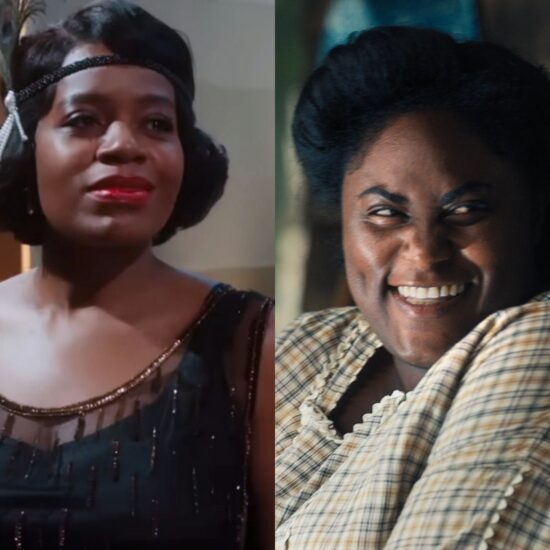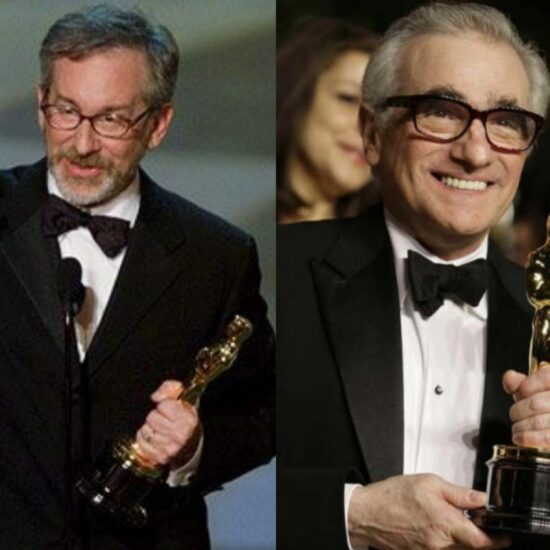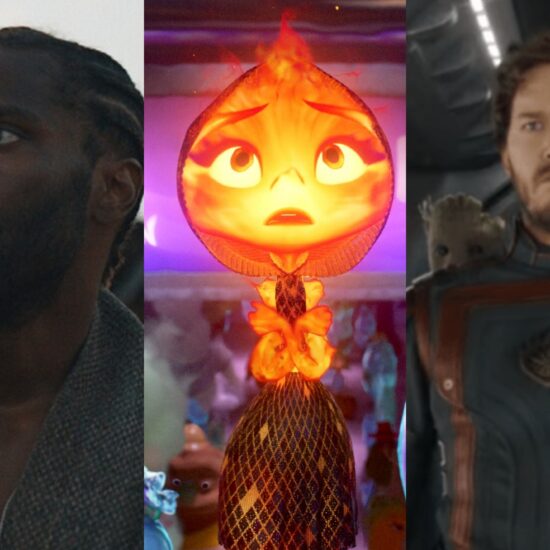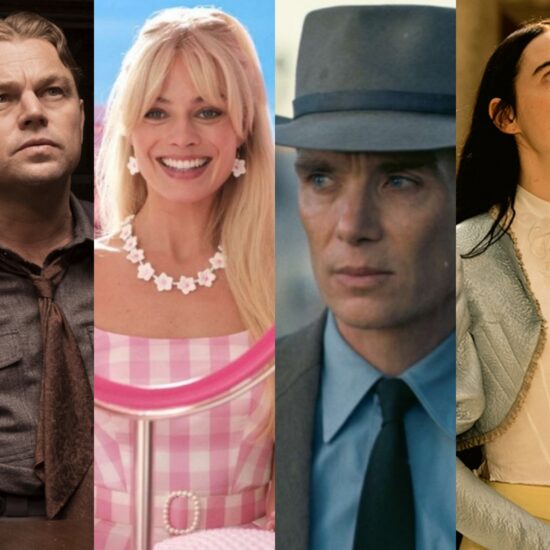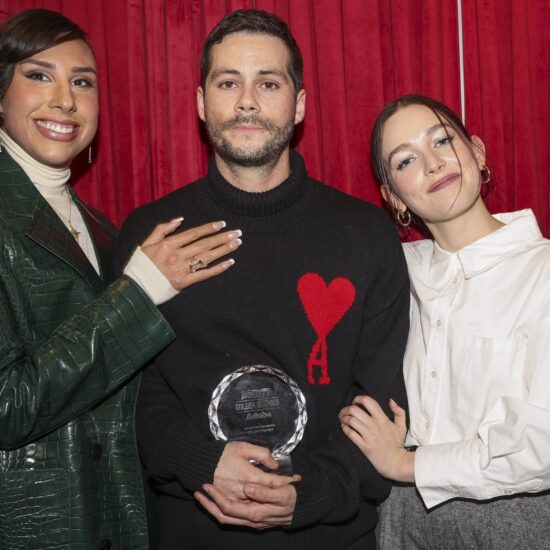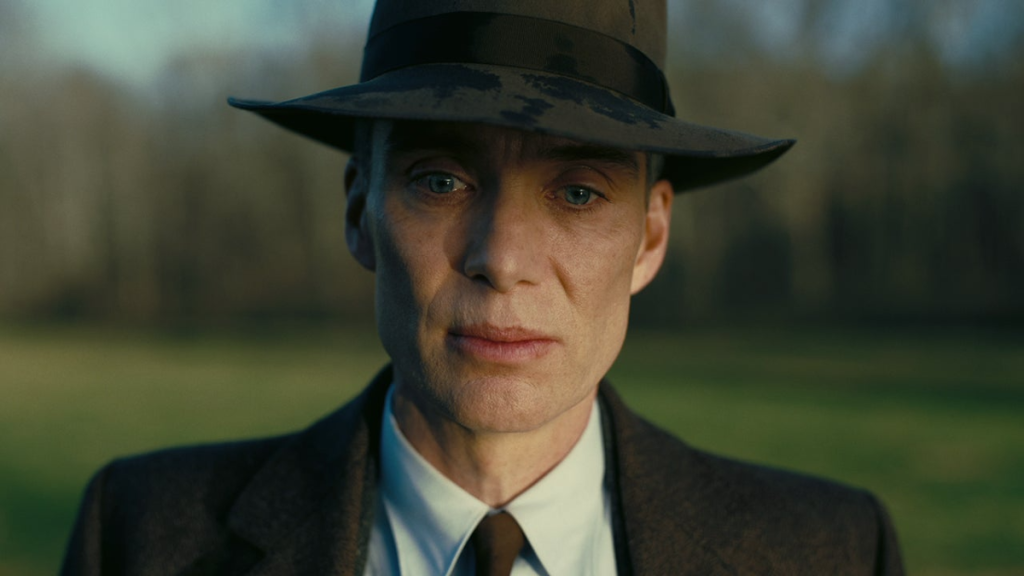
It’s the year of color/black-and-white hybrid films, led by such Best Cinematography Oscar contenders shot on Kodak film as “Oppenheimer” (Universal), “Poor Things” (Searchlight), “Asteroid City” (Focus Features), and “Maestro” (Netflix). In addition, there are two other contenders of interest: “The Zone of Interest” (A24) contains a series of striking monochromatic moments, while the black-and-white “El Conde” (Netflix) offers a lone color sequence.
They are part of a great stylistic tradition of intermingling color and black-and-white to evoke heightened states of mind in such films as “The Wizard of Oz,” “A Matter of Life and Death,” “Bonjour Tristesse,” “Wings of Desire,” “JFK,” “Natural Born Killers,” and “Pleasantville.” It can be real or imaginary, but the aesthetic differences help drive the narratives.
By contrast, “A Haunting in Venice” (20th Century), shot by Kenneth Branaugh’s go-to cinematographer, Haris Zambarloukos, utilizes conventional black-and-white flashbacks to recap a mysterious murder. This follows the traumatic monochromatic opening flashback in Branagh’s second Hercule Poirot remake, “Death on the Nile.”

But there’s never been such a concentration of hybrids in a single year. This further demonstrates the growing popularity of black-and-white cinematography while offering new ways of visually combining the two formats. In terms of Oscar precedent, Oliver Stone’s groundbreaking “JFK” earned DP Robert Richardson the first Academy Award for hybrid cinematography. The Kennedy assassination conspiracy thriller shifts between black-and-white and color by seamlessly combining documentary footage, TV coverage, and dramatic narrative. The result is a heightened exploration of traumatic memory.
This was followed by cinematographer Janusz Kamiński’s Oscar win for the black-and-white “Schindler’s List,” which contained four color scenes: the opening Shabbat celebration, the little girl in the red coat during the destruction of the ghetto and when the dead bodies are burned, and the finale when the survivors visit Oskar Schindler’s (Liam Neeson) grave.
“Oppenheimer”
Christopher Nolan divides his large-format biopic thriller into two separate perspectives and timelines: We cut back and forth between J. Robert Oppenheimer (Cillian Murphy) leading the secret team at Los Alamos to build the atomic bomb in color (titled “Fission”) and Admiral Lewis Strauss (Robert Downey Jr.) advocating further nuclear testing during the Cold War in black-and-white (titled “Fusion”). The collision of these two narratives involves memory as quantum physics metaphors, and the parallel framing devices are Oppenheimer’s hearing in 1954 to revoke his security clearance and Strauss’ Senate confirmation hearing for Secretary of Commerce in 1959. While Nolan intended color to be subjective and black-and-white to be more objective, the latter is actually more nuanced because of Strauss’ limited understanding, achievement, and perspective.
Nolan’s go-to cinematographer, Hoyte van Hoytema, ventured into uncharted territory with the 65mm large-format IMAX camera to explore the landscape of faces in this adversarial back and forth between Oppenheimer and Strauss. The result is a groundbreaking intimate spectacle, redefining portraits and close-ups for 70mm IMAX theatrical presentation. This was especially challenging for large-format black-and-white, with Kodak engineering brand new 65mm film stock for first-time IMAX usage. This large-format finishing process required a special partnership between Kodak, FotoKem, IMAX, and Panavision to support the 65mm black-and-white workflow.
“Poor Things”
Yargos Lanthimos’ twisted “Frankenstein” gender-bender is a more complex feminist, coming-of-age exploration than “Barbie,” shot by his go-to cinematographer Robbie Ryan. Emma Stone plays Bella, a distraught Victorian woman who commits suicide and is re-animated with the brain of her unborn child by iconoclastic scientist Dr. Baxter (Willem Dafoe). She awkwardly starts out with the mental capacity of a feral toddler and quickly becomes more insatiable in every way, outgrowing the confines of Baxter’s Gothic-looking London house/lab. The first act is shot in expressionistic black-and-white as a primitive start to Bella’s rebirth, and the fish-eye lens jarringly distorts her surreal perspective.
But then Bella runs away with slick and debauched lawyer Duncan (Mark Ruffalo) on a whirlwind adventure across the continents. That’s when her transformation switches to color, particularly color-reversal Ektachrome 35mm film. This provides a more vibrant and detailed look for especially heightened moments during her sexual escapades in Lisbon, on a Mediterranean cruise, and in Paris. The use of various textures, contrast, and color with different stocks and lenses brilliantly conveys Bella’s bold transformation into a sexually liberated and independent woman way ahead of her time.
“Asteroid City”
Wes Anderson’s sci-fi fable about fear, grief, and repression during the Atomic Age (with an ensemble cast led by Jason Schwartzman, Scarlett Johansson, and Tom Hanks) explores two related narratives in color and black-and-white, shot by go-to cinematographer Robert Yeoman. It’s a Pirandello-like play-within-a-TV broadcast-within-a-movie conceit. The main storyline, shot in hyper-real pastel colors and 2.40:1, is the cinematic re-enactment of the play’s TV broadcast about a kid’s retro-futuristic science fair in the American southwest of 1955. They are disrupted by the landing of an alien, which stirs up emotions and allows for select closure (with actors occasionally stepping out of their roles). The eponymous town, built from scratch near Chinchón, Spain, perfectly suits the director’s fondness for hand-crafted theatricality with symmetrical, diorama-like compositions.
Meanwhile, the behind-the-scenes of the broadcast and making of the play (involving Ed Norton’s playwright, Adrien Brody’s director, and several of the actors) are shot in black-and-white and 1.33:1. They’re presented as dramatizations for the broadcast and get very meta with the blurring of actors and their characters. The monochromatic tone suitably fits the predominant aesthetic format of the era.
“Maestro”
Bradley Cooper directs and stars in this sweeping exploration of legendary conductor/composer Leonard Bernstein through the lens of his complicated marriage to Chilean-American actress Felicia Montealegre (Carey Mulligan). Spanning more than 30 years and shot by Matthiew Libatique (Oscar-nominated for “A Star Is Born”), it’s a bittersweet love story about the couple becoming soulmates and how they later drift apart when Bernstein becomes a musical icon and indulges in hedonism with same-sex lovers.
The first 45 minutes are shot in black-and-white and 1.33:1, as the couple meet cute in screwball fashion and establish a strong bond. Visually, it’s monochromatic classicism with a swooping camera. The only bit of stylization is a queer dreamlike fantasy from the “Fancy Free” sailor ballet with Bernstein as the sexual object. It switches to color in the ’60s and 1.85:1, with a silhouette of Montealegre, back to the camera, and the reveal that she’s wearing a turquoise sheath dress. Their world has suddenly changed: more passion, more intensity, and more conflict.
“The Zone of Interest”
Jonathan Glazer’s “The Zone of Interest” takes a forensic look at the banality of evil in this real-life depiction of SS officer Rudolf Höss (Christian Friedel), the commandant of Auschwitz, who lived within eyeshot of the concentration camp with his wife, Hedwig (Sandra Hüller) and their five children. Oscar-nominated cinematographer Łukasz Żal (“Ida” and “Cold War”) captures the domestic goings-on with fly-on-the-wall authenticity, especially Hedwig tending to her paradise of a garden. Glazer tries to avoid any hint of cinematic contrivance by utilizing innovative 360-degree sets, with 10 cameras installed that were removed in post, providing “the unsettling quality of surveillance.”
The director and cinematographer provide two striking moments in black-and-white of a little girl sneaking out at night to pick apples and pears and leaving them for the prisoners in the dirt. These were shot with a military thermal camera as a way of also seeming uncinematic and occur while Rudolf reads “Hansel and Gretel” to his daughter off-screen to help her fall asleep.
“El Conde”
Pablo Larraín’s “El Conde” envisions Chilean dictator Augusto Pinochet (Jaime Vadell) as a vampire seeking death in a black comedy, best described as “Nosferatu” meets “Succession.” Two-time Oscar nominee Ed Lachman (“Carol,” “Far From Heaven”) uses the lighter large-format Alexa Mini LF Monochrome camera for an appropriately expressionistic black-and-white look with very fluid movement around the sets. As part of the retro look, he also utilized the Ultra Baltar lenses used on Orson Welles’ “Citizen Kane,” “The Magnificent Ambersons,” and “Touch of Evil.”
However, there is a singular daytime sequence in vivid color that departs from the dark, expressionistic mood, providing a glimpse of the love and happiness that have been missing from Pinochet’s life.











